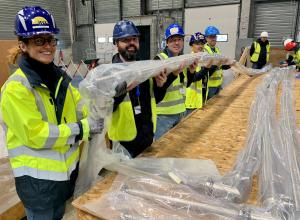Not huge but essential
It represented the successful conclusion of a five-year contract between the European Domestic Agency, Fusion for Energy, and the German company Cryotherm GmbH & Co. KG. The delivery consisted of 32 sets of jumpers plus spares, which is all that is required for the ITER torus and cryostat cryopumps. The jumpers are a custom design and allow the pumps to be disconnected for maintenance activities. They also allow the cryogens to be distributed with minimal heat loss and pressure drop.
For more on the ITER cryopumps, visit this page of the ITER website.


